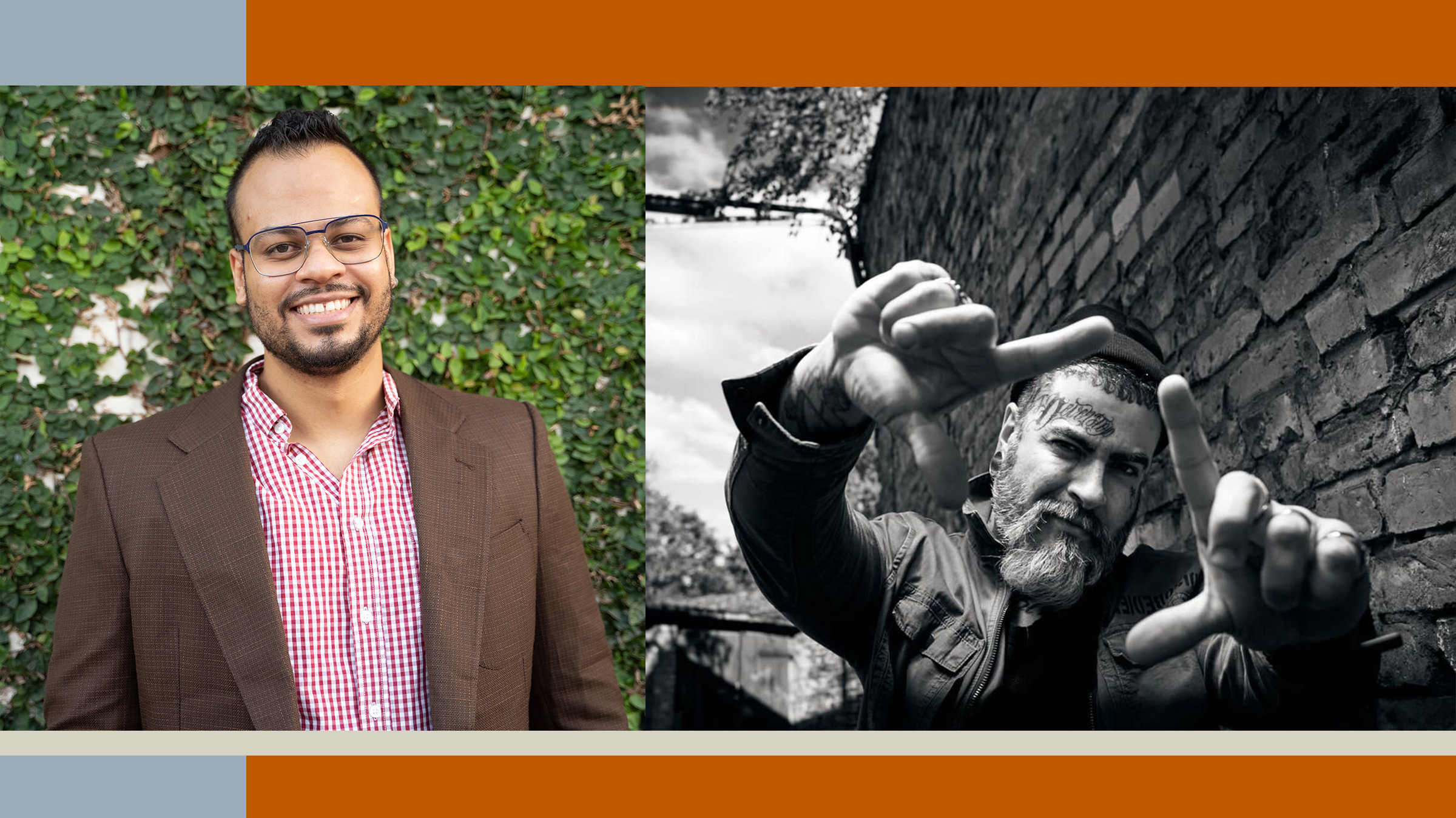Science & Art: Exploring Bee Microbiomes

Left: Alan Emanuel Silva Cerqueira Right: Tico Canato
Pollinators, especially social bees like honeybees, bumblebees, and stingless bees, play a crucial role in maintaining our ecosystems. These bees rely on their gut microbiome—a community of beneficial microbes that help with digestion and protect them from pathogens. These microbes have evolved alongside bees for millions of years, passed down from generation to generation through social interactions. Even in less social bees, like carpenter bees, microbes are still transmitted, showcasing the importance of sociality at different levels in maintaining this relationship.
This intricate and fascinating symbiosis between bees and microbes is the focus of ongoing research at the Moran Lab at UT-Austin, where I, Alan Cerqueira, am a scientist studying carpenter bee microbiomes. I am also a musician, and these two passions led to the idea of merging science and art through a collaboration with renowned Brazilian graffiti artist, designer, and art teacher Tico Canato, whom I met at SXSW, 2024.
Tico, known for his character "Ondi" and his focus on social-environmental problems and mental health, translated the science of bee microbiomes into a visually stunning art exhibit that underscores the importance of social interactions—for both bees and humans. Just as sociality helps bees exchange beneficial microbes, human interactions foster well-being and mental health.
This unique Science-Art collaboration debuted at the Texas Science & Natural History Museum on September 10 and will be presented at the Lady Bird Johnson Wildflower Center on September 22, as part of Austin Museum Day. The exhibition will feature Tico’s paintings illuminated by blacklight, revealing the “glowing” microbes in bees’ guts, symbolizing the invisible benefits of social interactions.
Alongside the artwork, microbiology and entomology displays from the Moran Lab will provide educational insights, making this event a blend of art, science, and outreach.

Left: Stengl-Wyer Scholar Korin Jones. Right: Alan Emanuel Silva Cerqueira. This is a painting under normal daylight conditions.

Left: Stengl-Wyer Scholar Korin Jones. Right: Alan Emanuel Silva Cerqueira. This is a painting under a blacklight. Tico uses blacklight paint in this work.

Alan Emanuel Silva Cerqueira (left) and Tico Canato (right).
Acknowledgements:
Moran Lab, the National Institutes of Health (NIH), DJ and cultural producer DJ Sampa, Desert & Denim Brasil, College of Natural Sciences, Alex Donovan, Monte Monreal, Pamela Owen, and the entire team from the Texas Science & Natural History Museum; Patrick Moran, Annie Bekarian, Sean Griffin, and the entire team from the Lady Bird Johnson Wildflower Center; and Korin Jones and Sabrina Rinaldi from the Moran Lab for their support and event organization. We also thank Nicole Elmer for this post and advertisement, and the members of the Moran Lab for their cooperation.



